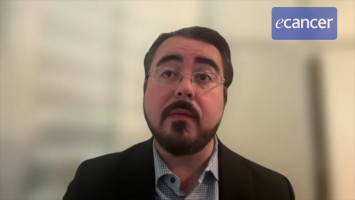The Canadian Cancer Trials group, CO.21 CHALLENGE trial, is the first randomised trial in the world asking the question whether exercise can improve cancer survival. The study was launched in 2008, so many years ago, and the rationale for doing it was based on observational data that was published in 2005 and 2006 suggesting that exercise following a diagnosis of colon cancer may reduce the risk of cancer relapse. We felt at that point it was important to test this empirically with a randomised trial.
What was the methodology?
In this randomised trial patients with colon cancer who had completed surgery and adjuvant chemotherapy were randomised to one of two arms. The control group received an exercise booklet encouraging a healthy lifestyle and exercise. The experimental arm received the same materials but also received a funded personal trainer life coach for three years.
This physical activity consultant worked with the patient over three years to increase their levels of exercise. The target was to increase their exercise ten MET hours above their baseline. A MET is a unit of energy; to put this in context, going for a brisk walk for one hour would count as four METs.
So the physical activity consultant would work with the patient to come up with an exercise prescription based on their lifestyle, interests, and other activities they liked to do to increase their exercise and hit that ten MET target.
This was done initially in the first six months ramping up using behaviour change techniques. The physical activity consultant would meet with the patient every two weeks for a motivational coaching session, and then for a supervised exercise session. In year two and year three this became monthly. The primary endpoint was disease free survival.
Patients could choose any type of aerobic exercise, everything from swimming to biking to kayaking and skiing, running or walking, but the typical patient would choose a walking programme. If they went for a brisk walk of 45 to 60 minutes three or four times a week, they could hit their targets.
What are the clinical implications of these findings?
The key results really are quite astounding. We found that patients that were provided the structured exercise programme and physical activity consultant had a substantial increase in their exercise. They also had an important improvement in their physiologic measures of fitness – the V02 max and a six-minute walk test. But the really remarkable results were related to survival. When it comes to the primary endpoint, disease free survival, there was a 28% reduction in the risk of recurrent or new cancer, with exercise. This translates to a difference in five-year survival of 74% for the control group and 80% for the exercise group.
What this means in pragmatic terms is that for every sixteen patients who went on the exercise programme, exercise prevented one person from developing recurrent or new cancer.
The overall survival results are even more impressive, with a hazard ratio of 0.63, a 37% reduction in the risk of death. This translates to 8-year survival rates of 83% in the control group, and 90% in the experimental arm. Again, putting that in pragmatic terms means that for every fourteen patients who went on the exercise programme, exercise saves one live.
Is there anything else you would like to add?
The policy and practice implications of this study are profound. I believe this sets a new standard of care, and that exercise is no longer just something that can improve quality of life and fitness for cancer survivors, it is now a cancer treatment that improves survival.
The important part of this is going to be the translation into practice, because knowledge of these results in themselves will not likely be sufficient to allow most people to change their lifestyle. So we need health systems and hospitals to invest in providing this behaviour change intervention and these exercise specialists to support patients so they can make these lifestyle changes.
Ultimately, this intervention is empowering for patients, the goals are achievable for patients, and compared to many of our cancer medicines the costs are very low, and so this is sustainable for health systems.








